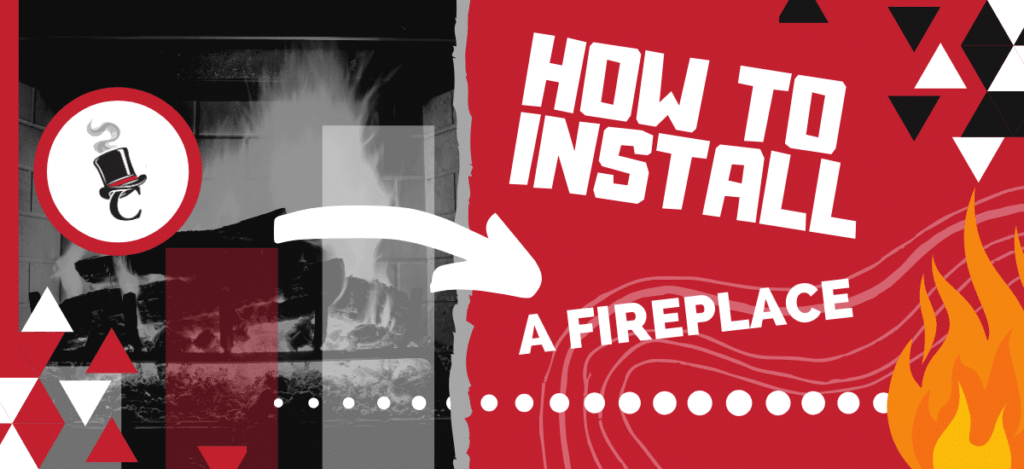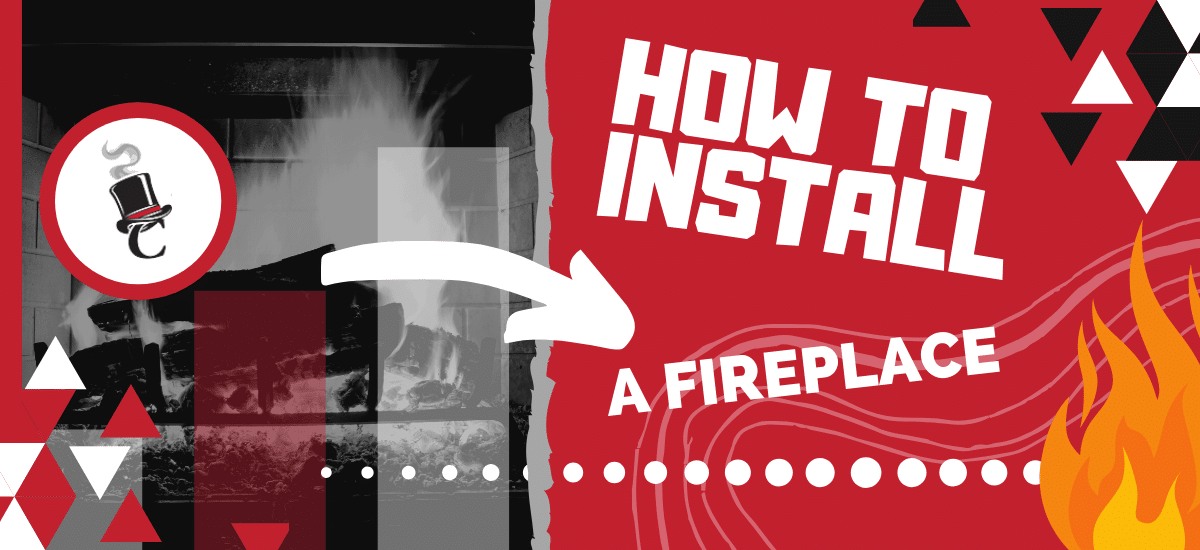A new fireplace can make your home feel more cozy and add an additional source of heat for the winter months. A DIY fireplace can be on the harder end of the scale for DIY projects, but it’s something anyone can do if you’re willing to put the time in. Here’s how to install a fireplace.
1. Select the Fuel Type
Most people will opt for a wood-burning fireplace. This gives you the traditional look of a fireplace plus the ability to achieve energy independence and significant heat output. A gas fireplace can provide a more consistent level of heat and may be cheaper to run if gas prices are low in your area. Select gas if you’re going for pure comfort and don’t want to deal with wood, dust, and snow melt as you carry wood into the house.
For more info on our company’s process of fireplace installation click here.
2. Make Room for Your Fireplace
You usually want a DIY fireplace to go on an exterior wall. It’s much easier to vent it through the wall than it is to cut a chimney into your roof. Keep in mind that the vent will be a steel tube similar to a dryer vent. You won’t have a brick chimney unless you’re willing to knock out and rebuild an entire wall and area of your roof.
It may be a good idea to get some cardboard boxes and make a model fireplace so you can make sure it fits into your room. A new fireplace will sit on your existing floor space rather than in your walls as it might in new construction. Remember to space furniture at least six feet away to prevent fires.
If you are installing a freestanding wood stove, you will install vertical hole in the ceiling with a ceiling support box. ALWAYS follow the instructions!
3. Choose Your Model
Shopping for the right unit. The actual fireplace or wood stove should be a single, pre-made UL Listed firebox with an instruction manual. This ensures that it’s sturdy and able to withstand high temperatures.
You’ll need to do a little prep work and decorative work around it, under it and over it.
This part of the project is critical- it involves planning, research, budgeting, and seeing the entire project from start to end correctly. It is much more than just buying one you like.
We recommend Napoleon Fireplaces, and we sell these.
4. Pull Permits
Installing a fireplace is a major renovation that will require a building permit in many places. Call your city or county to find out what you need to do. Don’t skip this step. If you go to sell your home or need an inspection for another reason, you could be fined or have to take out your fireplace if you installed it without a building permit.
Remember, smart people bail out when the planning part of the situation is getting over their head.
So if that is where you are at, give us a call, or find an NFI Qualified installer in your area that has Worker’s Compensation Insurance, General Liability, and Professional Liability and is trained in this process.
5. Replace the Flooring
Your fireplace will sit on the floor like your oven or clothes dryer. You need a smooth, hard surface that won’t catch on fire. Concrete, brick, or hardwood are ideal. If you have carpet, you have to pull it up to prevent fires. In addition, you’ll want a few feet of non-flammable flooring surrounding your fireplace so embers that blow out when you add wood don’t start a fire.
Check the installation manual! Many new solid fuel appliances require THERMAL PROTECTION of the floor under and around the appliance. This must be achieved by placing
Micore 300 on the floor BELOW the ember protection.
6. Create an Elevated Stand
Some people will want their fireplace to sit a little higher. You do have the option to build a wood-framed stand if you desire. Use plywood beams to your desired height and top them with a single board across the top.
7. Create a Vent Hole
Cut a hole in your drywall to the size of the fireplace vent. Be sure to cut slowly and watch out for electrical wires. Also try to reposition the vent rather than trying to move a wall stud.
Next, cut a larger section of drywall out and remove it so you can access the interior of the wall. Create a wood frame around your vent hole and remove insulation from that area. Push wires to the side if needed (if there is no slack in the wiring, call an electrician to move them). You’ll close this part back up when your vent is in place.
Finally, cut through your home’s exterior siding so that you now have a hole running all the way outside.
8. Install the Vent
The vent will usually have a fire stop to protect the wall, the tube, and an outside cover. Install the fire stop first using screws or adhesive as directed. Next, attach the vent tube from the fireplace through the fire stop. Finally, attach the exterior cover to the outside of the vent.
When you’re done, use caulk to seal around the vent on both the interior and exterior wall.
9. Frame Your Fireplace
You now have a functioning fireplace and could be done, but most people will want a more permanent look. To make your fireplace look more permanent, you can extend the wall around it to frame it.
Just like your other walls, first build a frame out of wood around the fireplace. You’ll also want to frame a mantel above it. The mantel can be flush with the wall or extend out slightly. Be sure the mantel can support the weight of any decorations you wish to place there.
When the frame is complete, attach drywall sheets. Add texture to your desire and finish off with paint that matches the rest of your room.
10. Test Your Fireplace
Always test your work when you will be home to monitor it. Preferably, light your first fire early in the morning so you can watch it all day.
Go outside to make sure the heat and smoke are venting properly. If you can’t feel heat or see smoke, you may not have sealed your vent properly and could be venting inside of your wall.
Keep monitoring throughout the day to make sure that everything is holding up.
Is a DIY Fireplace a Smart Idea?
The steps to install a fireplace are simple in theory but involve many complex tasks. Many homeowners wouldn’t feel comfortable just cutting a hole in their wall to run the vent. Framing a new wall and getting it to look good is also a difficult task that many contractors hire seasoned professionals to perform. If you’re working slowly because the steps are new to you and you want to get everything right, you could be looking at several weeks of having your living room torn up. That alone would make many people not want to take on the project.
You also need to think about safety. When you’re lighting a fire inside of your home, you want to make sure you control it. If you don’t properly shield the fireplace or have any gaps in your installation, you could start a fire inside of your walls. There’s also a good chance that you may have to move electrical wires out of the way, and that’s always something you should leave to an electrician.
Using a licensed contractor to build your fireplace can alleviate all of your concerns. Since this is a routine project for us, we can often get it done in just a few days. We also take care of all of the permits for you and make sure the work is up to code. In the unlikely event that something does go wrong, we’re fully insured. Finally, if you were thinking about making cuts to your project to make it easier to do it yourself, we can use our expert knowledge and tools to build your fireplace how you really want it while creating a more permanent installation that will maximize your home’s resale value.
To learn more about your fireplace installation options or to get a quote, give us a call today.

